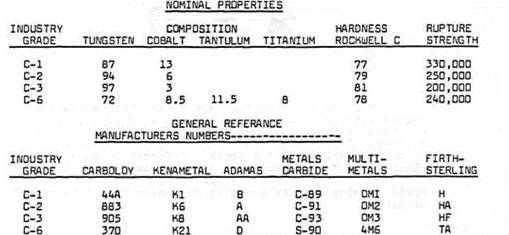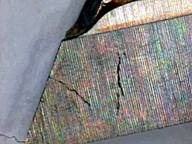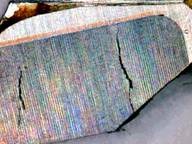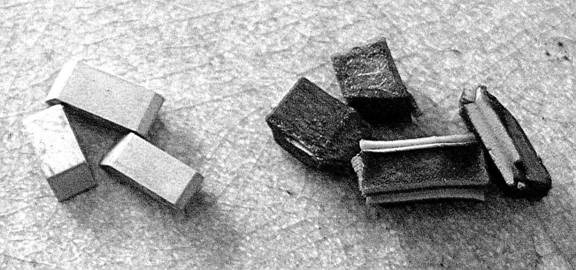 Loading... Please wait...
Loading... Please wait...(800) 346-8274
Free Ground Shipping on Orders over $150!
Over 23,000 Items Discounts up to 40% off Retail
CSM Carbide
Our Newsletter
- Home
- Media
- Carbide Saw Manual
- CSM Carbide
CSM Carbide
There are numerous large books written on carbide, but we intend to discuss those things that should be the most important to you.
The carbide industry manufactures several hundred grades of sintered carbide. There are between 15 and 20 used in any volume in industry. Each manufacturer insists upon using his own grade identification system, but industry has established standards starting with C-l, C-2, C-3 etc..
Tungsten carbide is a chemical compound of tungsten and carbon sintered with a binder of cobalt. The means of properly uniting these materials was discovered in Germany over forty years ago. (1931 - Editor) Today there are several other additives that affect the product in different ways. The most prominent additives are tantalum and titanium.
This discussion of carbide will be limited to four grades. These four grades are used on nearly all carbide saws in use today.
The abrasion resisting grades are the straight tungsten carbide grades, and the steel cutting grades are the alloy grades with titanium and tantalum.
It would be safe to say that 80% of all carbide saws are made with grade C-2, which is the most generally accepted grade for general purpose use. Its uses include plywood, particle board, plastics, non-ferrous metals, cast iron, and hard rubber. Grade C-l is used where heavy shock is present, such as in edger saws, rip saws, and interrupted cuts on other abrasive materials.
Grade C-3 is a very hard and abrasive resistant grade and is very brittle. This grade is used on Formica, particle board, and other very abrasive materials where little shock is present. Grade C-6 is an alloy grade and most generally used for cutting steel. There are several other grades that may have some uses in carbide saws, but very infrequently.
It should be noted that the more cobalt, the tougher and softer the carbide is.
The following chart should give you a better idea of these four grades properties and relationships.

It should be noted that an increase in one chemical property results in a loss in another. This makes it very difficult to flatly state that one grade must perform better than another on any given job. You must prove it on the job. In some cases a marked difference can be gained by just changing from one manufacturer's carbide to another using the same industry grade. But you would be wise to not experiment too much because it is costly and most often does not result in enough improvement to justify the time spent.
More about Carbide
Abrasive wear is the type caused by cutting materials like graphite, transite, textolite, hard rubber, and non-ferrous metals like aluminum, bronze, brass, etc.. To combat straight abrasive wear use the straight tungsten grades of carbide.
Cratering wear is the type of wear encountered by seizing, galling, and pull-out generally occurring when sawing ferrous metals like steel. To combat cratering wear use carbide grades with tantalum and/or titanium.
Problems related to carbide can usually be traced to something other than the grade of carbide. These problems can be poor geometry, sudden overheating from grinding causing thermal cracks, and rough handling.


These pieces of carbide are broken from surface thermal cracks from grinding too hot and fast. This type of crack is characterized by a smooth moon-like break that is discolored. These breaks can be distinguished from force breaks by the appearance of the break. A forced break will be clean and not discolored and the surface will be rough. Break a piece of carbide and you will see the difference. You would be wise to purchase tips that have been treated for brazing.

Unheated carbide Burnt carbide
These pieces of carbide were heated in an oven to 1500 decrees and held for five minutes. The surfaces are badly oxidized and are soft enough to cut with a knife. This oxidation growth will continue until you remove the heat. If these pieces had been well fluxed, the flux would have formed a crystal over the surface and the oxidizing would not have occurred. You cannot braze on an oxidized surface. This is why flux is so necessary.




